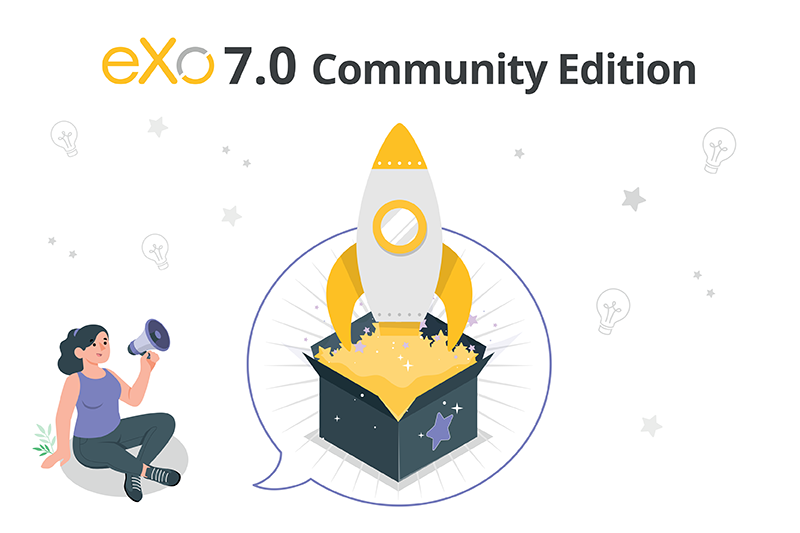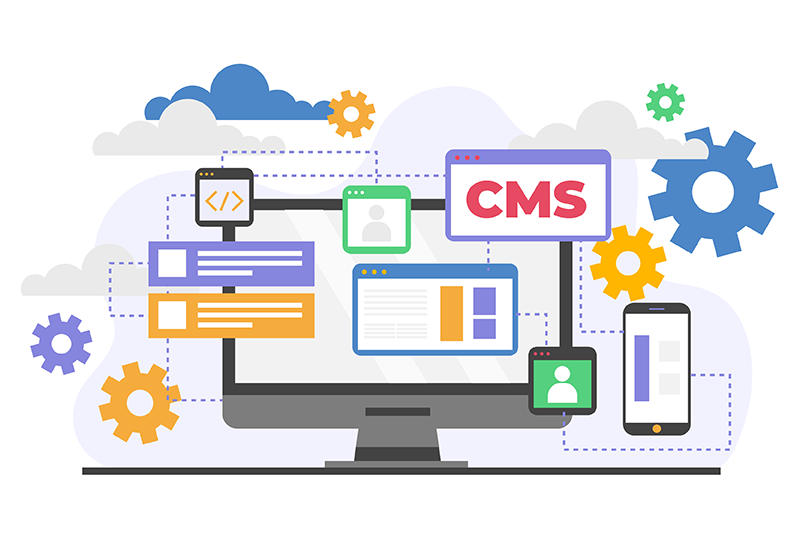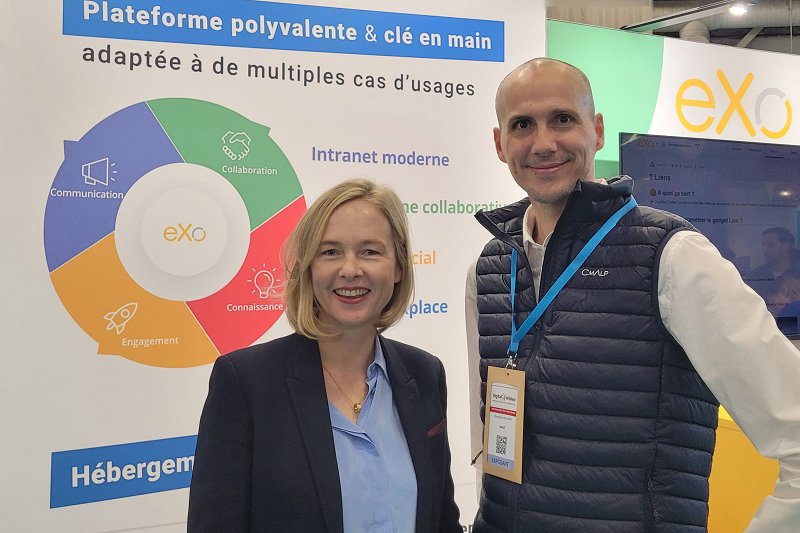- Patrice Lamarque
- February 28, 2017
Discover the Salesforce and eXo integration
At eXo, through our solutions, we strive to limit your work silos and when necessary we create bridges between them. That is why I am pleased to show you today how we are now letting our clients’ sales teams become more efficient by leveraging the talents available in their company.
With our new integration between Salesforce and eXo Platform, your company’s business performance will improve thanks to collaborative sales practices.
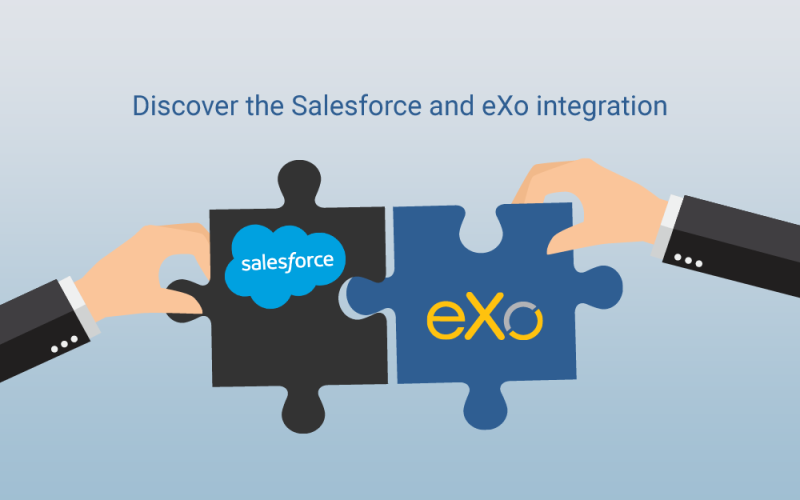
Content
1. Detect Prospects in Your Ecosystem
Let’s say you have an online community that visitors—for example, the users of your products—are allowed to join. It is a place where they can discuss your products and services and it is supported by your community managers. Wouldn’t it be useful to easily recognize those visitors who are already clients and those who are likely to become so?
Well, if your community is powered by eXo Platform, it will now be possible for your employees (and only them) to view the valuable additional information directly extracted from your simple CRM, which is shown on the community members’ profile pages.
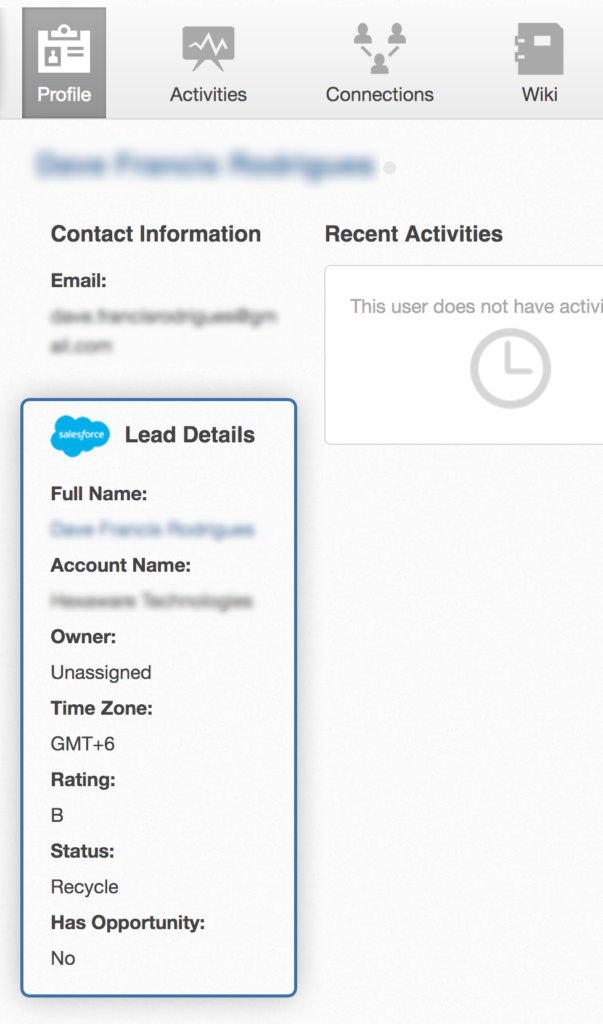
Now let’s imagine that one of your community managers has just found someone to be very active on your forums and who seems to know your latest products particularly well.
Using the Salesforce section of the member’s profile, your employees will understand better the relationship between that person and your company, even before interacting with them.
Are they already identified in your CRM as a lead? Have any of your sales reps ever engaged in a conversation with them? Is there already an open opportunity associated with them? Is this one of your existing customers?
With this information, you can really adapt your interactions to avoid mistakes or, instead, score points! Is this a customer you want to nurture? Maybe they are unhappy about your service and it’s time to call them? Or maybe they are having technical problems and your support team should help. Or maybe they are interested in products they have not bought yet and there is an opportunity to follow up?
For those who have access to it, a link provides easy access to the corresponding Salesforce lead record, for, for example, completing information or searching for other contacts on the same account, or even notifying the account manager by dropping them a note.
This profile section is a simple yet powerful tool for connecting your sales force to your community and allowing all your employees to interact intelligently with your forum members. But there’s more. Even when you do not have an online community, you can still leverage our Salesforce integration and improve how you handle deals.
2. The Loneliness of the Sales Rep
In any sales process, there is a moment when a business opportunity arises and it is up to a salesperson to convince a prospect to buy your products or services. In many organizations, this process is largely solitary and relies primarily on the individual talent of your salespeople.
Equipped with a phone, a diary, a few slides, and a good mail client, the valiant sales rep must work tirelessly to convince the prospect to trust their proposal. This is exhausting, sometimes unappreciated, work without much room for error.
Fortunately, it is possible to overcome these difficulties by adopting a collaborative culture.
3. Win More Deals with Deal Rooms
What if your salespeople could open dedicated workspaces for their opportunities? Spaces that could hold all the crucial information on the opportunity, like a call for tender or a draft response they are working on. A place where they could get the right people around the table to support them in their task? Enter the deal rooms.
In our integration, a deal room can be created via a button directly within the Salesforce interface.

By clicking on the button, a space named after the opportunity will automatically be created in eXo Platform, granting you administrator privilege. From there, the deal room will act as a bridge between your Salesforce work silo and the rest of your company through the collaborative platform.
On creating the space, the system posts a summary of the key information of the opportunity in the Activity Stream:
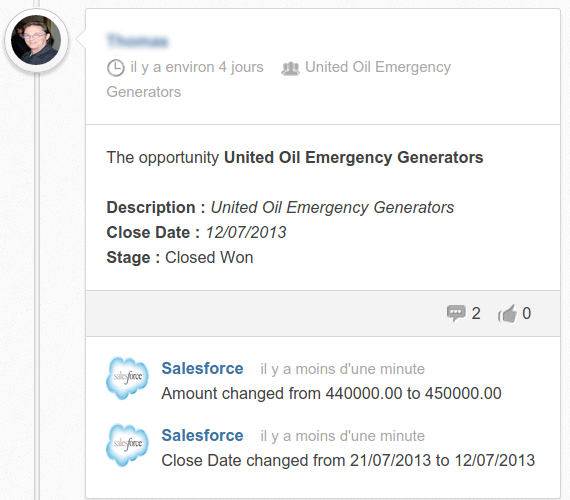
The name of the opportunity, its description, amount, and stage are summarized. As soon as you make a change to these values in Salesforce, the activity will be updated and pushed up the stream to make sure everyone in the deal room notices.
4. Keep Everyone Updated
Your Chatter conversations in Salesforce about the opportunity are automatically reposted in the activity stream so that no one will miss any important information:

The documents you attach to the opportunity are accessible from the Documents app in the deal room and published in the activity stream:

This information is synchronized automatically and the members of the deal room will receive notifications:

5. How Can You Collaborate in a Deal Room?
From there, it is up to you to play. Here are some tips to get the most out of your deal rooms.
Start by assembling your dream team. Do you want a business expert to check the accuracy of your proposal? A pre-sales engineer to assist you in a technical product demonstration? Your manager to validate the proposal before sending it out? To do so, invite them directly from the Members application.
Then, gather the documents received from your prospect and upload them in the Documents area of the deal room, if they are not already in Salesforce. Co-develop your own response documents collaboratively with your team, who can proofread and complete your drafts.
For complex opportunities, how about tracking the actions to be done in the Tasks app of the deal room? Then, you can coordinate what everyone is doing throughout the sales process.
Keep track of milestones and share what needs to be done by entering key dates (appointments, demos, presentations, …) into the Calendar app.
Gather everyone and debrief them after your calls with the customer in the deal room’s Chat room.
6. Build a Customer-Oriented Culture
By implementing collaborative practices within your sales processes, your business performance should improve. And beyond that, by putting customers back at the heart of your employees’ activities, your staff will realize the importance of customers better and the difficulties in satisfying them. Gradually, your company will develop a customer-centric culture.
At eXo, we have used this integration for over a year already. We feel much more involved in business issues than before. Many employees who did not suspect the complexity of dealing with customers recognize that they actually feel more engaged in contributing to the success of our business. Our sales teams feel more supported, their proposals are stronger, they win more deals, and our company is winning more customers who are more enthusiastic.
You, too, should try our Salesforce and eXo integration and become a successful customer-centric organisation.
Give us your feedback to help us improve it. And if you’re not using Salesforce but are interested in this model, let us know which CRM you’d next like to see integrated with eXo Platform.
eXo Platform 6 Free Datasheet
Download the eXo Platform 6 Datasheet and
discover all the features and benefits
discover all the features and benefits
I am the product officer at eXo. I oversee product management and product marketing. My teams design, create and promote the features of and improvements to eXo Platform. As a former enterprise software developer turned product manager, I have a passion for how IT can improve people’s lives.
In this blog, I write about some of my personal interests, such as productivity, alternative forms of management and corporate organisations, collaboration, open-source and emerging technologies.
Related posts
- All
- eXo
- Digital workplace
- Employee engagement
- Open source
- Future of work
- Internal communication
- Collaboration
- News
- intranet
- workplace
- Knowledge management
- Employee experience
- Employee productivity
- onboarding
- Employee recognition
- Change management
- Cartoon
- Digital transformation
- Infographic
- Remote work
- Industry trends
- Product News
- Thought leadership
- Tips & Tricks
- Tutorial
- Uncategorized
Leave a Reply
( Your e-mail address will not be published)
Connexion
0 Comments
Commentaires en ligne
Afficher tous les commentaires
